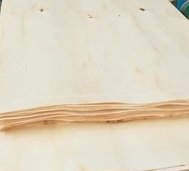Veneers
Precautions for Core Veneer Drying in Low Humidity Conditions

When drying core veneer in low humidity conditions, it’s essential to take specific precautions to maintain the quality of the wood and ensure an effective drying process.

Here are key precautions to consider:
- Controlled Environment:
- Create a well-insulated and enclosed drying environment to minimize the impact of external low humidity. This helps retain the moisture within the drying area.
- Humidification Systems:
- Implement humidification systems to increase the moisture content in the air. This can be achieved through the use of misting systems or humidifiers strategically placed in the drying facility.
- Temperature Regulation:
- Adjust the drying temperature appropriately. Lower temperatures can slow down the drying process, so maintaining a slightly higher temperature can help compensate for the low humidity.
- Monitoring Moisture Content:
- Regularly monitor the moisture content of the core veneer. Low humidity can lead to rapid drying, so frequent checks are crucial to prevent over-drying and related quality issues.
- Proper Stacking and Spacing:
- Arrange the core veneer on drying racks with adequate spacing to ensure uniform drying. Proper stacking allows for better airflow, preventing uneven drying and potential warping.
- Extended Drying Times:
- Be prepared for longer drying times in low humidity conditions. Adjust the drying schedule to allow sufficient time for the veneer to reach the desired moisture content without compromising quality.
- Avoid Rapid Changes:
- Minimize abrupt changes in drying conditions. Sudden shifts in temperature or humidity can impact the wood negatively, leading to defects such as checking or cracking.
- Quality Control Measures:
- Conduct regular quality checks throughout the drying process. Inspect for any signs of over-drying or other issues and make adjustments accordingly.
- Wood Conditioning:
- Consider pre-conditioning the core veneer before the drying process. This involves allowing the wood to acclimate to the drying environment gradually, reducing the risk of stress-related defects.
- Documentation and Record Keeping:
- Maintain detailed records of the drying process parameters, including humidity levels, drying times, and any adjustments made. This information is valuable for analyzing and optimizing the drying process.
By implementing these precautions, you can mitigate the challenges posed by low humidity conditions during core veneer drying and ensure the production of high-quality wood products.

